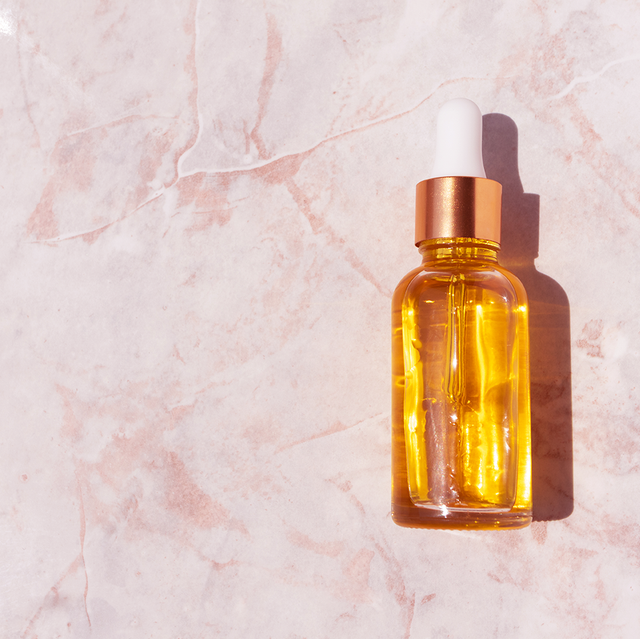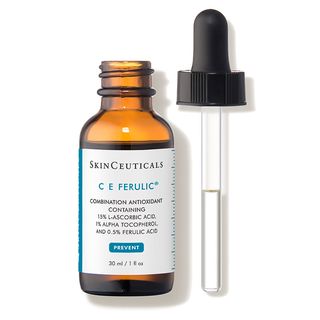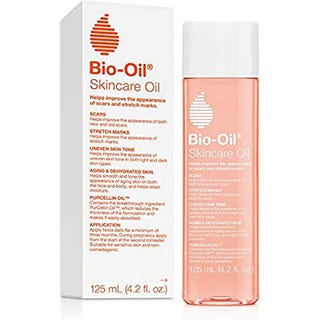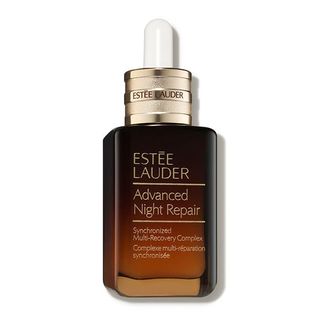olhakozachenkoGetty Images
At this point, vitamin E is a ubiquitous ingredient in skincare — it’s found in everything from lotions to serums. You might be most familiar with it as vitamin C’s partner in crime — the two ingredients go hand in hand since vitamin E helps stabilize vitamin C, which is why so many vitamin C serums contain vitamin E as well.
While you can reap the benefits of this antioxidant by eating foods rich in vitamin E like leafy greens and soybeans, it’s also a skin superstar when applied topically. Cheryl M. Burgess, MD, FAAD, a dermatologist at Center for Dermatology and Dermatologic Surgery in Washington, D.C. gives the scoop on this ingredient in skincare.
What are the benefits of vitamin E for your skin?
Since vitamin E is both an antioxidant and an anti-inflammatory, this vitamin has many different benefits for skin:
- Protecting from discoloration: If you are prone to dark spots or hyperpigmentation, mixing vitamin E into your skincare routine could be beneficial. “The anti-oxidative effects of vitamin E can be preventative to darkening of the skin due to sun exposure,” Burgess says.
- Anti-aging: As an antioxidant, vitamin E also mitigates damage caused by free radicals, which makes it a powerhouse anti-aging ingredient. Burgess explains that vitamin E helps fight “against the oxidative effects of environmental and intrinsic aging.”
- Combating acne: Vitamin E can also help calm acne-prone, reactive skin. “The anti-inflammatory properties may curtail an acne breakout,” Burgess explains. This could also help minimize any discoloration that comes from acne.
How should you use vitamin E for skin?
There are two different ways that you can use vitamin E on skin — you can apply pure vitamin E oil to your face, or you can use a product that’s formulated with the ingredient. Products containing vitamin E may be the best bet for anyone hoping to add the ingredient to their routine. Burgess says that most vitamin E products contain 1% or less of the antioxidant.
Who is vitamin E best for, and who should avoid it?
Burgess says products formulated with vitamin E work well for most skin types. “With its unique anti-inflammatory and antioxidant properties, people have seen anti-inflammatory responses in acne,” says Burgess. Vitamin E can also be helpful for soothing superficial burns on the skin.
If you have oily skin, be sure to only use vitamin E if it’s blended into other products — skip trying to use vitamin E oil on its own. When using pure vitamin E oil, Burgess says that “oily complexions will occasionally find white and blackheads developing in more prone areas such as on the eyelids, rim of the lips and the T-zone regions of the face.” Pure oil is best left for anyone with drier skin whose pores aren’t prone to clogging.
How do you choose a product containing vitamin E?
Look for vitamin E in moisturizers, serums and face oils. To know if a product contains vitamin E, look for tocopherol on the ingredient label, as this is the most common form of vitamin E used in beauty products.
It’s great to find a vitamin C serum that contains vitamin E, so that you can your skin can soak up the benefits of both vitamin C and vitamin E. Combined, these powerful antioxidants work in tandem to reduce oxidative stress, lighten dark spots and brighten skin, while vitamin E helps keep vitamin C stable.
This content is created and maintained by a third party, and imported onto this page to help users provide their email addresses. You may be able to find more information about this and similar content at piano.io





